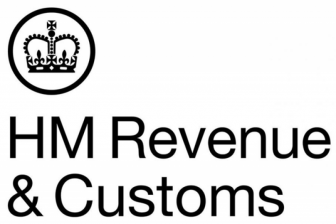 Estate agents are feeling the heat as HMRC is clamping down on agents not complying with money laundering regulations.
Estate agents are feeling the heat as HMRC is clamping down on agents not complying with money laundering regulations.
In October, HMRC fined 68 agents a total of £519,645 for breaching anti-money laundering requirements.
As part of meeting their AML obligations, agents need to verify the identity of their customers.
However, some may be using legacy AML processes which only serve to identify their customers, not verify them, putting the agent and their firm at risk.
Agents should adopt the latest processes to ensure they do not fall foul of HMRC.
Verifying and not just identifying
Money laundering regulations require agents to verify the identity of their customers.
Simple identification where a customer answers the question ‘who are you’ is not enough. Without the additional step of verification and ensuring the customer is who they say they are, the agent has no way of knowing whether the customer is using their real name or not.
The verification process can be undertaken in different ways, but generally it should involve asking customers to prove their identity via different methods such as certified documents or electronic screening using biometric data and facial recognition.
But what does this mean? This primarily relates to how agents verify the identity of their customers.
Traditionally, agents have relied on a professional such as a notary to confirm the identity of their customer. Yet, in practice, it may not be enough to rely on a document certified by a notary.
Relying on notaries could put agents at risk, as research in the government’s national risk assessment shows that notary services could be exploited for money laundering by willingly or unwittingly verifying forged documents.
So, agents that rely on a notary-certified document may fail to meet the required standard for compliance.
So, how can agents manage this risk?
First, agents should ensure that internal guidance explicitly refers to the acceptable methods of verification and, if utilising certification provides, the exact wording required to achieve compliance.
Second, agents must consider who, or what tools, they rely on to carry out verification.
Third, agents should ask several questions to establish a thorough verification process.
Such questions should include how agents will verify a certifier, how easy it would be to locate them in the future, what training that person has received, whether that person understands the significance of certification and if there is any risk of undue influence.
While customers may try to encourage agents to expand the list of acceptable certifiers for their convenience, this can leave agents open to risk later down the line. Instead, agents should limit the list to reduce risk.
Some agents may be tempted to continue to rely on manual verification. However, new digital tools make electronic verification a quicker and safer alternative to help mitigate money laundering risks.
For instance, electronic identity verification, which may include address, document, biometric and near-field communication screening, in addition to screening for politically exposed persons and sanctions. This allows agents to act with confidence. Knowing that the document is genuine and that the person presenting the document is the legal holder.
This strengthens the security and compliance of customer onboarding, and by considering these steps agents can ensure they meet their AML obligations and do not fall foul of HMRC.
Harriet Holmes is AML services manager at Thirdfort.


Why don’t HMRC send out guidance to all Estate Agents directly? They clearly have all our details from the tax we pay or from AML registration but it’s just a minefield knowing what they want and when they change the rules. It just looks like a cash cow for them. Also are there any records anywhere of how many money laundering cases are prosecuted each year using property sales or property lettings (separately) as the laundering tool?
You must be logged in to like or dislike this comments.
Click to login
Don't have an account? Click here to register
In case it needs clarifying, despite PIE slapping HMRC’s logo across the top of the page this advertorial is nothing to do with them and it was actually written by Thirdfort, who sell what’s marketed as AML services.
And regarding agents “feeling the heat” as HMRC ‘clamps down’: The 68 agents referred to for breaching AML requirements were fined simply because they traded without registering with HMRC – low hanging fruit for them. Seemingly there was no investigation into the day-to-day compliance from these estate agency businesses; nothing to do with their legacy systems; nothing to do with verifying customers. To imply the fines are related is dishonest.
You must be logged in to like or dislike this comments.
Click to login
Don't have an account? Click here to register